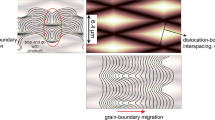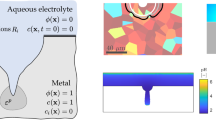Abstract
A complex methodology has been developed in order to quantify the conditions of mechanical treatment in laboratory and commercial ball mills. The experimental determination of the collision frequency and the impact energy has been paralleled by an accurate numerical modelling of the balls and powder dynamics. The obtained results have been further confirmed by a direct inspection of the motion of balls and powder inside a transparent quartz reactor by means of high-speed video recording. The temperature of mechanochemical reactors has been also continuously monitored during the course of mechanical treatments. The methodology has been systematically applied to characterise on absolute basis the kinetic behaviour of a large variety of mechanically-induced structural and chemical transformations. In particular, systematic investigations have been performed on the amorphisation of intermetallic and binary systems, on the formation of extended solid solutions in immiscible systems, on the ignition of combustion-like reactions in metal-metalloid mixtures and on the hydrogen storage in nanocrystalline and amorphous multicomponent metallic alloys. Mechanochemical transformations appeared to be basically ruled by two different mechanisms characterised by simple asymptotic trends and sigmoidal curves respectively. An attempt to rationalise the observed mechanisms on a phenomenological basis has been made.
Similar content being viewed by others
References
G. Heinicke, "Tribochemistry" (Akademie-Verlag, Berlin, 1984).
P. Yu. Butyagin, {tiSov. Sci. Rev. B Chem.} 14(1989)1.
E. Gutman, "Mechanochemistry of Solids" (Cambridge International Science Publishing, Cambridge, 1998).
B. B. Khina and F. H. Froes, J. Metals 48–7(1996)36.
F. Delogu, G. Mulas, M. Monagheddu, L. Schiffini and G. Cocco, {tiInt. J. Non-Equilibrium Proc.} 11(2000) 235.
C. Suryanarayana, Progr. Mater. Sci. 46(2001) 1.
F. Delogu, L. Schiffini and G. Cocco, {tiPhil. Mag.}A 81(2001) 1917.
C. Caravati, F. Delogu, G. Cocco and M. Rustici, Chaos 9(1999) 219.
C. Deidda, S. Doppiu, M. Monagheddu and G. Cocco, J. Metastable Nanocryst. Mater. 15/16(2003) 215.
L. Takacs, Progr. Mater. Sci. 47(2002) 353.
S. Doppiu, M. Monagheddu, G. Cocco, F. Maglia, U. Anselmi-Tamburini and Z. A. Munir,J. Mater. Res. 16(2001) 1266.
F. Delogu and G. Cocco, Mater. Sci. Eng.A343(2002) 314.
F. Delogu, L. Schiffini and G. Cocco, Mater. Sci. Forum 360–362(2001) 337.
C. Deidda, F. Delogu, F. Maglia, U. Anselmitamburini and G. Cocco,Mater. Sci. Eng.A, in press.
G. Mulas, L. Schiffini, G. Tanda and G. Cocco, this Conference (manuscript O-54).
Author information
Authors and Affiliations
Corresponding author
Rights and permissions
About this article
Cite this article
Delogu, F., Deidda, C., Mulas, G. et al. A quantitative approach to mechanochemical processes. Journal of Materials Science 39, 5121–5124 (2004). https://doi.org/10.1023/B:JMSC.0000039194.07422.be
Issue Date:
DOI: https://doi.org/10.1023/B:JMSC.0000039194.07422.be




